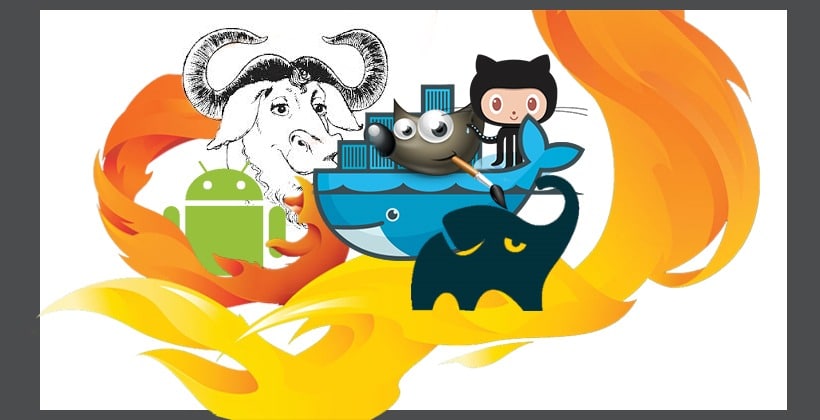
Ever wanted to know the stories behind some of the top open source tools and products out there? Well, we here at Mend are all about open source!
So, this week we’ve done a bit of digging, and found the meaning behind some of the logos we all know and love.
Logos and Their Hidden Stories

Android
Ok, if you don’t know which company the above logo represents, you’re probably still using a 56.6k dial-up modem to access the internet.
Android, the largest open source project in the world, was initially developed by Android inc. founded by Andy Rubin.
When Andy was trying to come up with a name for his product he turned to computer games for inspiration, as any developer would. He finally landed on a character named, you guessed it, ‘Android’, from Gauntlet the Third Encounter.

After Google acquired Android inc., the company’s illustrator, Irina Blok, was tasked with coming up with a logo. She explored a wide range of images within the whole robot/android theme, and ultimately landed upon the design we have today.

Linux
Many wonder what the story is behind Linux’s penguin Tux (as in [T]orvalds and [U]ni[X]).
Legend goes that Linux’s founder, Linus Torvald, was bitten by a crazed penguin which infected him with penguintitis. The effects of the virus on Torvald were pretty severe. Not only did he have many sleepless nights due to insomnia, but he developed an intense love towards Tux and his kind.
While this story may not be 100% true, what can be agreed upon is Torvald did indeed have a close encounter with a penguin. Although it was probably less ferocious than legend suggests.
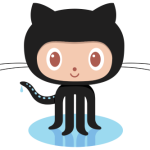
GitHub
The idea for GitHub’s logo came from its “octopus merge” – the practice of combining three or more branches of development. Initially the logo’s designer Simon Oxley thought about calling his creation ‘Octopuss’ (combination of octopus and pussycat) to represent how complex code combines can create peculiar things. But in the end, GitHub decided to go with ‘Octocat’ (for obvious reasons).
The logo has become so beloved, that the team at GitHub has even had Octocat appearing in his very own videos.

Mozilla Firefox
When Mozilla had to change its original Phoenix/Firebird logo due to trademark reasons, they of course had to come up with an alternative.
Mozilla’s team came up with the logo that we all know today as ‘Firefox’. However, if you think the name ‘Firefox’ was actually inspired by a fox, you’d be wrong. It was actually inspired by a couple of red pandas!
Mozilla’s decided to go with the name ‘Firefox’ after they adopted two red pandas, or ‘firefoxes’ as some call them, to raise awareness of the creature’s fight against extinction. However, as Mozilla’s illustrators thought the red panda ‘didn’t conjure up the right imagery’, they decided to go with a fox for the company’s logo instead.
Finally, the fiery fox encircling the globe represents Mozilla’s blazing fast speeds and global reach.
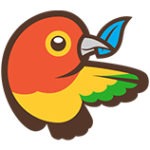
Bower
Package Manager Bower also looked to nature for its logo.
Bower’s bird is based on, you guessed it, the bowerbird. Bowerbirds are nature’s great seducers, building structures and collecting a whole lot of colorful and sparkly things (leaves, berries, bottlecaps etc.) to attract mates.
So why did Bower pick the bowerbird doing its lovely mating dance as their logo? Well, just like the bird, Bower puts together and manages a heap of things (assets, utilities, frameworks) to makes its users smile.
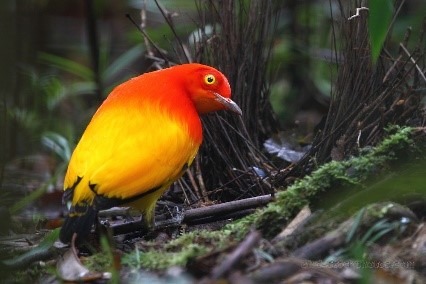
A Bowerbird in action

Gradle
I’d like to introduce Gradlephant, the build tool Gradle’s new logo.
“Why the elephant?” I hear you ask. Well, Gradle recognizes that sometimes you need a lot of effort and sheer tenacity to perform a successful build, hence the elephant. However, if you browse Gradle’s homepage, you’ll probably find Gradlephant swearing. Isn’t this a bit strange, especially seeing as the product’s motto is ‘Build Happiness.’
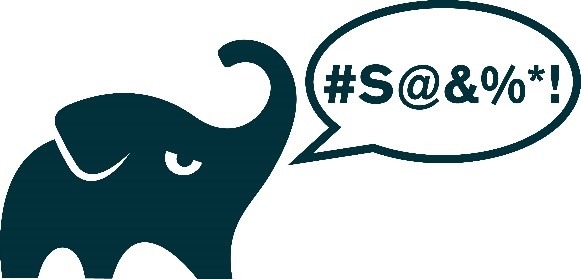
Gradlephant just needs a moment
Gradlephant may love a successful build, but he also gets frustrated at inefficient build processes like code freezes, long build times, bug regressions and other things which basically don’t work. However, Gradlephant is a positive fellow, for as Gradle say themselves ‘the process of swearing at broken #S@&%*! is the beginning point of being able to build happiness.’

GIMP (GNU image manipulation)
Many ask what animal Wilber, GIMP GNU’s logo, is. Is he a fox? a mouse? a dog? a raccoon?
According to Wilber’s creator, Tuomas Kuosmanen, he’s actually none of the above. He’s a gimp – a species made up by the creator himself. Kuosmanen wanted to highlight GIMP’s cool image manipulation capabilities, and have a bit of fun by keeping users guessing as to what animal Wilber was along the way.
It looks like Kuosmanen wasn’t the only one to have a bit of fun. Users have been trying their hands at creating some gimp animals of their own.
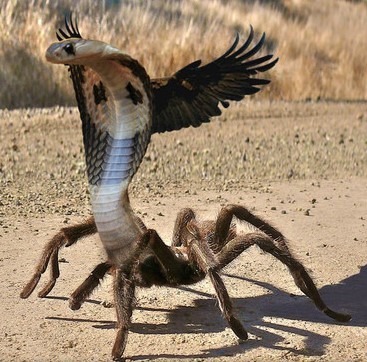
A Corbrantula
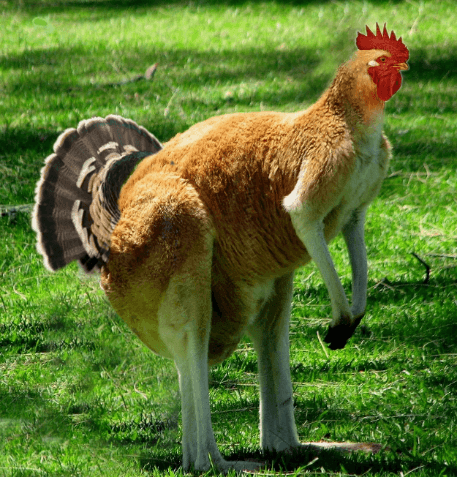
A Kangarooster
If you want to have a go at creating your own gimp, just click here.

Apache Hadoop
Ever wondered where the open source software framework Hadoop got its name and logo?
The creator of the project, Doug Cutting, got the idea from his 5-year-old son. One day his son was playing with a yellow stuffed elephant, when he suddenly came up with the name ‘Hadoop’.
Just shows, inspiration can spring from anywhere!

Docker
Why did Docker decide to go with a whale for their logo? Apparently to express its product’s values of expedition, automation, encapsulation and simplification. As they explain “the whale is carrying a stack of containers on its way to deliver those to you”.
After Docker landed on a whale as their logo, it needed a name, right? So, Docker asked their community to vote which name was best, and Moby Dock was the winner. And the fun didn’t stop there!
In June 2015, Docker actually adopted a real-life whale, ‘Molly Dock’. Now Molly, or should I say whale #763, is swimming somewhere in the Pacific, safe in the knowledge that Moby’s got her back.

GNU
And finally, last but not least…
While the animal used in the open source project GNU’s logo, it’s a gnu by the way, may be a little obvious, the story behind this choice of wildebeest isn’t.
Basically, back in 1983, Richard Stallman was determined to develop an alternative to the commercial UNIX. Hence, he named his projects GNU, as in GNU’s Not Unix. After that, the choice of the animal we see above was only natural, don’t you think?
Any More?
And there, you have it. Some of the wild and wonderful stories behind the logos in our open source world.
If you have any other logos you would like to learn about, let us know.
